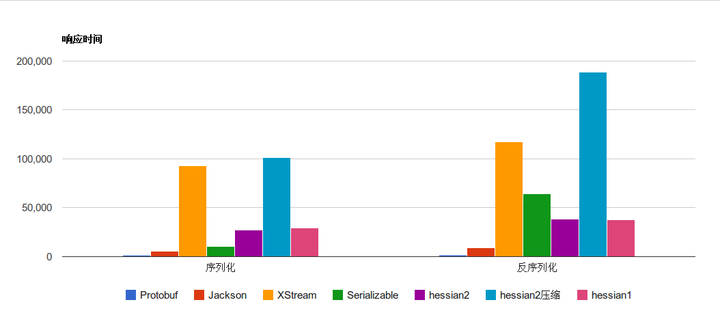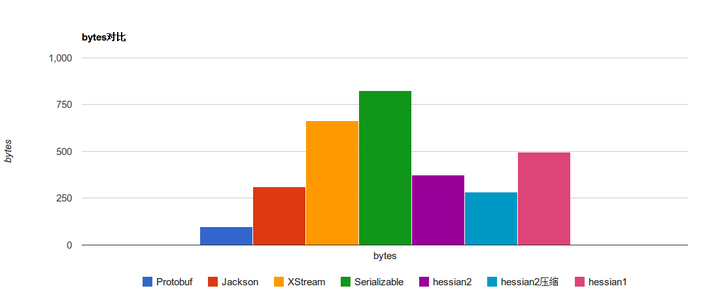标签:json arc cti 输出 unknown zed href java包 link
随着微服务架构的流行,RPC框架渐渐地成为服务框架的一个重要部分。在很多RPC的设计中,都采用了高性能的编解码技术,Protocol Buffers就属于其中的佼佼者。Protocol Buffers是Google开源的一个语言无关、平台无关的通信协议,其小巧、高效和友好的兼容性设计,使其被广泛使用。
Protocol buffers are Google’s language-neutral, platform-neutral, extensible mechanism for serializing structured data – think XML, but smaller, faster, and simpler. You define how you want your data to be structured once, then you can use special generated source code to easily write and read your structured data to and from a variety of data streams and using a variety of languages.
官方如是说:
The name originates from the early days of the format, before we had the protocol buffer compiler to generate classes for us. At the time, there was a class called ProtocolBuffer which actually acted as a buffer for an individual method. Users would add tag/value pairs to this buffer individually by calling methods like AddValue(tag, value). The raw bytes were stored in a buffer which could then be written out once the message had been constructed.
Since that time, the “buffers” part of the name has lost its meaning, but it is still the name we use. Today, people usually use the term “protocol message” to refer to a message in an abstract sense, “protocol buffer” to refer to a serialized copy of a message, and “protocol message object” to refer to an in-memory object representing the parsed message.
有位网友曾经做过各种通用序列化协议技术的对比,我这里直接拿来给大家感受一下:
序列化响应时间对比

序列化bytes对比

具体的数字

以下示例源码已上传至github:ginobefun/learning_projects
<?xml version="1.0" encoding="UTF-8"?>
<project xmlns="http://maven.apache.org/POM/4.0.0"
xmlns:xsi="http://www.w3.org/2001/XMLSchema-instance"
xsi:schemaLocation="http://maven.apache.org/POM/4.0.0 http://maven.apache.org/xsd/maven-4.0.0.xsd">
<modelVersion>4.0.0</modelVersion>
<groupId>com.ginobefunny.learning</groupId>
<artifactId>leanring-protobuf</artifactId>
<version>1.0-SNAPSHOT</version>
<dependencies>
<dependency>
<groupId>com.google.protobuf</groupId>
<artifactId>protobuf-java</artifactId>
<version>3.2.0</version>
</dependency>
</dependencies>
</project>
syntax = "proto3"; // 声明为protobuf 3定义文件
package tutorial;
option java_package = "com.ginobefunny.learning.protobuf.message"; // 声明生成消息类的java包路径
option java_outer_classname = "AddressBookProtos"; // 声明生成消息类的类名
message Person {
string name = 1;
int32 id = 2;
string email = 3;
enum PhoneType {
MOBILE = 0;
HOME = 1;
WORK = 2;
}
message PhoneNumber {
string number = 1;
PhoneType type = 2;
}
repeated PhoneNumber phones = 4;
}
message AddressBook {
repeated Person people = 1;
}
protoc -I=. --java_out=src/main/java addressbook.proto
public class AddPerson {
// 通过用户输入构建一个Person对象
static AddressBookProtos.Person promptForAddress(BufferedReader stdin,
PrintStream stdout) throws IOException {
AddressBookProtos.Person.Builder person = AddressBookProtos.Person.newBuilder();
stdout.print("Enter person ID: ");
person.setId(Integer.valueOf(stdin.readLine()));
stdout.print("Enter name: ");
person.setName(stdin.readLine());
stdout.print("Enter email address (blank for none): ");
String email = stdin.readLine();
if (email.length() > 0) {
person.setEmail(email);
}
while (true) {
stdout.print("Enter a phone number (or leave blank to finish): ");
String number = stdin.readLine();
if (number.length() == 0) {
break;
}
AddressBookProtos.Person.PhoneNumber.Builder phoneNumber =
AddressBookProtos.Person.PhoneNumber.newBuilder().setNumber(number);
stdout.print("Is this a mobile, home, or work phone? ");
String type = stdin.readLine();
if (type.equals("mobile")) {
phoneNumber.setType(AddressBookProtos.Person.PhoneType.MOBILE);
} else if (type.equals("home")) {
phoneNumber.setType(AddressBookProtos.Person.PhoneType.HOME);
} else if (type.equals("work")) {
phoneNumber.setType(AddressBookProtos.Person.PhoneType.WORK);
} else {
stdout.println("Unknown phone type. Using default.");
}
person.addPhones(phoneNumber);
}
return person